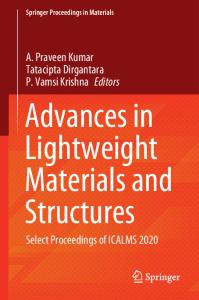Correlation of wear characteristics with hardness of recycled carbon fiber prepreg reinforced polypropylene composites
- PDF / 399,674 Bytes
- 6 Pages / 584.957 x 782.986 pts Page_size
- 13 Downloads / 350 Views
Muhammad Ilman Hakimi Chua Abdullah Department of Mechanical Engineering Technology, Centre for Advanced Research on Energy, Faculty of Mechanical Engineering, Universiti Teknikal Malaysia Melaka, Hang Tuah Jaya, 76100 Durian Tunggal, Melaka, Malaysia
Hairul Effendy Ab Maulod Department of Manufacturing Engineering Technology, Carbon Research Technology, Faculty of Engineering Technology, Universiti Teknikal Malaysia Melaka, Hang Tuah Jaya, 76100 Durian Tunggal, Melaka, Malaysia (Received 29 December 2015; accepted 19 January 2016)
Incineration or disposal of carbon fiber waste from the aircraft industry leads to serious energy consumption and environmental pollution. The use of this waste as reinforcement is a wise approach to appreciate the high performance of the carbon fiber. In this study, the sliding wear and frictional behavior of recycled carbon fiber prepreg (rCFP) reinforced polypropylene (PP) prepared via melt compounding method using an internal mixer were studied. The samples were categorized into PP reinforced by carbon fiber with resin (A) and carbon fiber without resin (B). Pin-on-disc method was utilized to evaluate the effect of rCFP content and physical condition of fibers on tribological performance of the composites. The results were supported by morphological analyses using scanning electron microscopy. It was found that polymer composites B for rCFP without resin exhibited better tribological performance than composites category-A. The addition of rCFP into PP was observed to increase its wear resistance with minimum coefficient of friction achieved at 3 wt% of rCFP content for both polymer composites.
I. INTRODUCTION
Current scenario pertaining to the depletion and high cost of the metal supply had spurred scientists globally to seek and search for other green and innovative substitute over the nonconventional raw materials.1 Polymeric matrices reinforced with glass and carbon fibers were developed for numerous mechanical and tribological purposes, such as seals, gears, bearings, and cams2–5 to replace metallic materials owning to their attractive combination of lightweight, economic fabrication, good chemical resistance, and low friction coefficient. The feature that makes polymer composites so promising in industrial applications is the possibility of tailoring their properties with functional fillers.2 Fillers, in the form of particulates and fibers, are often added to polymeric materials to improve their stiffness and strength. This second phase filler material will influence the
Contributing Editor: Mohd Fadzli Bin Abdollah a) Address all correspondence to this author. e-mail: [email protected] A previous error in this article has been corrected, see 10.1557/jmr.2016.236. DOI: 10.1557/jmr.2016.39
wear resistance of the composite material. The interactions of fiber fillers in polymer composites3 are a separate problem. In these materials, four processes of product removal dominate; (i) wear of the polymer matrix, (ii) abrasive wear of fibers, (iii) cracking and (iv) spalling of fibers and separati
Data Loading...










